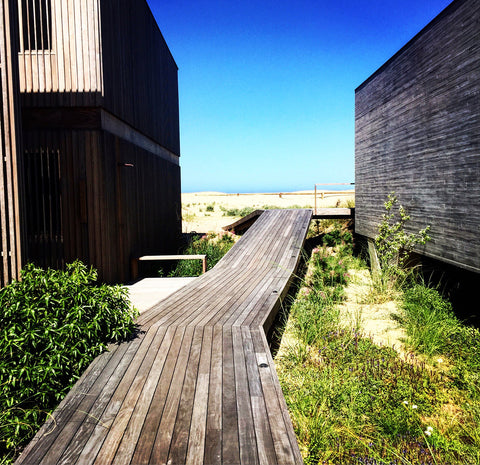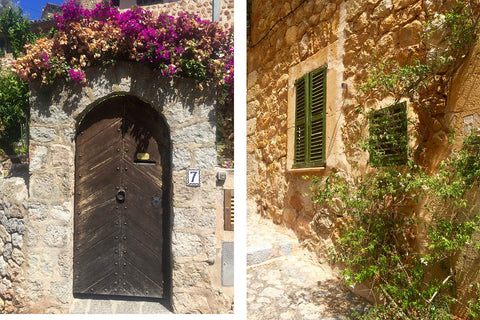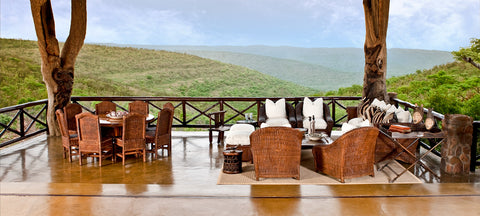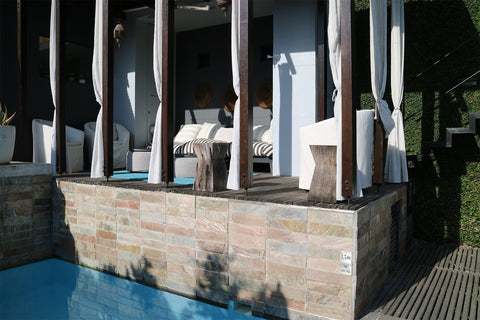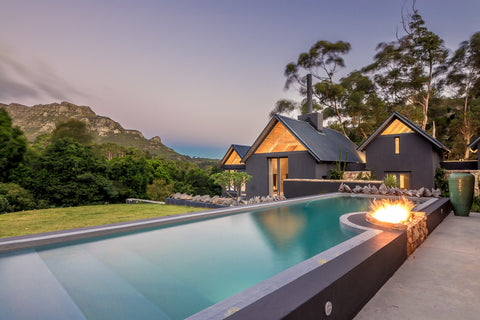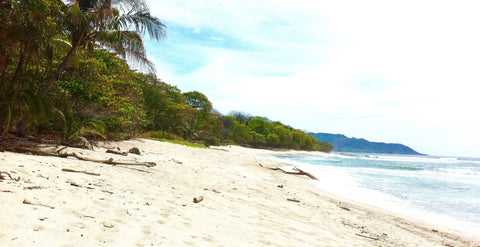
ZANZIBAR - MYSTERY, INTRIGUE and EXOTIC ADVENTURE
By Holly Meadows
Zan-zi-barr: the very name evokes mystery, intrigue and exotic adventure. Stone Town is where it simmers says Holly Meadows, with its crumbling coral-rag palaces, winding, walled alleyways, and a history steeped in spices.
Blessed with a sultry tropical climate, Zanzibar is a separate state within Tanzania, consisting of two large islands, Ungunja – Zanzibar Island – and Pemba. Clove and coconut plantations cover the interior of these Spice Islands. Verdant Pemba is laced by winding creeks and lush mangroves, while Zanzibar’s coast is fringed by sun–baked beaches and sleepy fishing villages.

For many, the highlight of a stay on Zanzibar is the old Stone Town quarter – a maze of cobbled alleyways leading to ancient homesteads and mosques, ornate palaces and bustling bazaars. Each twist and turn brings something new – brass–studded doors with elaborately carved frames, overhung by ornate balconies and detailed minarets. Black-veiled Muslim women fry balls of dough on street corners, and the intoxicating sound of the muezzin call to prayer floods the air.

I would be lying if I told you it was as if time had stood still. The ancient trading hub of East Africa is now a relic of its past, and it’s a crying shame not more has been done to preserve this UNESCO World Heritage Site. But, there is charm in the cultural melting pot that remains – recessed Persian houses jostle with modern Afro clothing boutiques, a waterfront dotted with old Arabic dhows, rusting 1970s-style ferries, and an Italian-owned gelato shop.

Here are my top 10 things to do in the magical jumble of Stone Town:
Emerson Spice House
An utterly enchanting rooftop restaurant & hotel, once home to the last Swahili ruler of Zanzibar. On restoration, thousands of abalone and oyster shells were found in its inner courtyard, hinting that once a mother-of-pearl-jewellery shop lived here. A rich Indian merchant used to trade from the building, and legend has it that he would dry carpets of sopping Rupee notes (from the ships) on the floors of the house! Emerson Spice House is dripping in opulent old-world Arabic/Indian appeal, and its cosy cushion-seated eatery offers unparalleled views across Stone Town’s exotic skyline.
Capital Art Studio
Near the top of Kenyatta Rd, founded in 1930 by Ranchid Oza, who became the semi-official royal family photographer for Sultan Khalifa. Eighty-odd years later it is now run by his son Rohit, a photographer himself who still shoots on film. The shop is a photographic treasure trove and its walls are hung with the political and monarchal history of East Africa – a myriad of lovingly framed black and white prints with Prince Charles’ 2011 tour proudly featured at the entrance.
Forodhani Gardens
As the sun sets in Stone Town, locals and tourists alike flock down to Forodhani Gardens on the waterfront, where a nightly food market serves up hot griddles laden with seafood. Quench your thirst with a freshly squeezed sugarcane juice, sample skewers of octopus dipped in tamarind, lobster and crab claw, platters of prawns and Zanzibari pizza (a chapati-type pita bread stuffed with mince meat, egg, mayo, onion & chilli).
Palace Museum
An imposing white-washed building, the once residence of the Zanzibari royalty is now a museum dedicated to archiving the history of Zanzibar’s Sultans. Climb the central staircase and peel off into rooms archiving the sultanate era (1828-1964) with an eclectic mix of leftover furniture, paintings and such like. Each floor represents a different period but make sure to spend time in Princess Salme’s room, who eloped with a German to Hamburg, excerpts from her autobiography Memoirs of an Arabian Princess from Zanzibar provide a fascinating glimpse into regal Stone Town life.
Lazulis
Tucked away in a corner just off Shangani rd, Lazulis is by far the best spot to eat lunch in Stone Town. Cheap and cheerful, this clean, colourful restaurant serves up a delicious array of modern Swahili fusion dishes, from coconut chickpea curry chapati-wraps to mango cashew nut & chicken salads, and cinnamon-spiced iced coffee. Locals on their lunch breaks and hungry tourists queue up for a menu lovingly created by South African Bonita Blom, who has lived in Stone Town for the last six years with her husband, a Zanzibari man, and their adorable son.

Spice Tour
Anyone visiting Zanzibar simply must go on a spice tour. Admittedly it’s a well-trodden tourist trap, but the experience is so worth it. You’ll taxi out to an interior plantation (many of which are no longer commercially functioning) and a local guide will walk you amongst vanilla pod vines, cumin seed pods and turmeric root. . Feel your senses stir as your guide tells tales of ancient spice remedies, lets you sniff hand- fulls of heady, broken lemongrass, and taste shavings of nutmeg – an old world aphrodisiac.
Sunset Dhow Sail
The iconic dhow is an ancient Arabic sailing vessel, carved out of mangrove timber and flagged with a lateen mainsheet, these graceful boats plied the trade winds between east Africa, Persia and India for centuries. In fact, they are still built and operate today, although mainly for Indian Ocean fishing and transport. One of Zanzibar’s biggest treats is to set sail aboard a sunset cruise and watch the historic Stone Town shoreline glide-by, while the lights from mainland Dar es Salaam twinkle in the distance.
St Joseph’s Cathedral
Peaceful, cool, and adorned in colourful biblical murals – the roman Catholic Cathedral of St Josephs is well worth the detour from bustling Kenyatta Rd. It was built by French missionaries and is inlaid with stained glass windows imported from the continent. Try to time your visit with when the local choir are practising, and make sure to hop across the road and take a peak at the intricately carved wooden chests at the workshop opposite.
Get lost
One of the most liberating and rewarding things to do in Stone Town is to do away with your map, get lost, and wander the labyrinth of cobbled courtyards and walkways. Be entranced by the heady aroma of strong Arabic coffee, feel your way through a shop hung with colourful Kanga fabrics, turn a corner, look up, and marvel at a mosque’s dome punctuating the skyline, conjuring to mind lyrical verses of the Koran. The beauty of Stone Town is in its many surprises.
Dharajani Market + Swahili cooking class
Food lovers and culture vultures will love this chaotic market, fringing the old part of Stone Town and spilling out onto side streets from underneath a gabled-fronted awning. Dried squid, barrow-fulls of fresh fruit, packets of spices and meat weighed-out on big brass scales – this is where Zanzibaris come to get their food fix. Visitors can take part in a traditional Swahili cooking class. A local teacher will meet you at Dharajani Market and lead you into the maze of live chickens and sacks heaving with spices. With the help of your teacher decide on a traditional recipe (such as aromatic rice Pilau, or Kaimati – syrupy spiced dough balls). Brave the barrage of hawkers and tick off a shopping list of ingredients before travelling by daladala (local open-air taxis) to your host’s home. Here you’ll sit on straw mats around an open fire and learn how to cook and eat in a traditional Swahili home-style. K V TOURS offer cooking experiences for about US$25 including food. Web. www.kvtours.net
SWAHILI FASHION WEEK
Swahili Fashion Week was started in 2008 by Tanzanian designer Mustafa Hassanali. Now in its eighth year, the event has grown to be the biggest East African fashion event. The shows kick off at the beginning of December each year in the Tanzanian coastal city of Dar es Salaam. Designers who made an impression last year included Afrikanus by Rui Lopez, Jamilla Vera Swai and Gabriel Mollel. Find out more on Swahilifashionweek.com

INFO DESK:
When to go: Avoid February to May when the weather is hot and humid, and the rainy season forces some hotels to close. It is best not to visit during the fasting month of Ramadan, as most restaurants are closed during the day. Best time: the cooler spring months of August to October.
How to get there: An ever-increasing number of airlines offer direct flights to Zanzibar. Hydrofoils and catamarans operate daily between Dar es Salaam and Zanzibar; booking kiosks are clustered together along the port. Pemba can be reached by flight and boat from Zanzibar and mainland Tanzania.
Where to stay: There are various options at every level from basic guesthouse to smart up-market hotels. As a rule, room rates are quoted in US dollars and usually include breakfast. Travellers who arrive by boat can expect to be met by a group of touts whose insistent attitude is difficult to resist.
FAST FACTS
Country: Zanzibar is a semi-autonomous part of Tanzania
Ethnicity: Arab, African, mixed Arab-African
Language: Swahili, Arabic and English
Religion: > 99% Muslim
Area: > 1 million Zanzibar 1,651 km2, Pemba 980 km2
MORE FROM My Escape
-
Forget about touristy Punta del Este and head east, a 45 min drive along the coast line, to the stylish and off the radar fishing village of Jose Ignacio. There is something special and unique...
-
There is something magical about Deia. Perched high up on the cliff tops, where the light seem to magically bouncing off the mountains, Deia is one of the most beautiful and picturesque villages I have ever...
-
This stunning private game reserve lodge is located in the deep South African bush. Few words can describe how beautiful this place is- almost picture perfect and nestled into the most breathtaking nature. Izingwe Lodge is...
-
The ultimate luxury is sometimes the opportunity to escape somewhere very remote. A place that is far away from everything and offers privacy, wildlife on your door step and endless secluded beaches. A place where...
-
I love travelling around the world and finding beautiful and stylish boutique hotels. Those hidden gems that offers privacy, style, amazing service and that feel of a home away from home. Here are three of my...
-
Just 30 min away from the buzz of Cape Town, you will find this stunning villa, set on a beautiful private estate in Hout Bay. This heavenly place offers luxury, bespoke timeless design and architecture...
-
Santa Teresa is located just north of the Cabo Blanco National Park on the unspoiled southern coast of the Nicoya Peninsula. The first time I discovered this heavenly place was more than 10 years ago....
-
I would say it is almost impossible not to get affected by this beautiful city, its nature, history, contrasts and its overwhelming beauty. Welcome to the mother city. Be prepared to fall in love. Here are...
-
Henry Cookson has certainly experiences some extreme adventures, from polar expeditions to standing face to face with a lioness in the African bush. The extra ordinary moments and places are many...


